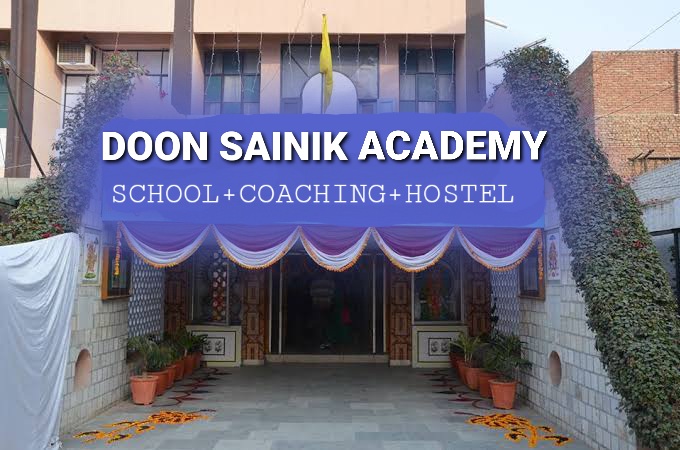Differences between Sainik School and Military School?
Table of Contents
Differences between Sainik School and Military School, RIMC?
Both Sainik schools and military schools in India train their kids so that they can join the armed forces with ease. Can students from non-Armed Forces families enroll in these schools? What steps are involved in enrolling kids in these schools? Do Sainik School and Rashtriya Military School’s curriculum vary in any way? Which Sainik school or military academy is best to enroll in?
When comparing RIMC and Sainik Schools, it is quite difficult to draw any meaningful comparisons because, in one way or another, the goals of both institutions are similar: to prepare students both physically and psychologically for service in the Indian Armed Forces.
Can the students from Non-armed Forces join these Schools?
Yes, students who are not in the military may also apply to these institutions. The Ministry of Defense and the State Governments are responsible for Sainik Schools. After passing the Sainik School entrance exam, boys are the only ones accepted to Standard 6th and 9th Standard.
Each school is required to enroll a certain number of SC and ST groups, students from other states and union territories, kids with state residency, and children of service members.
Read More About
RIMC and Sainik Schools
For organizations like the National Defense Academy, the Officers’ Training Academy, and the Indian Military Academy in the Rashtriya Indian Military College serves as a “Nursery of Leadership.” Boys aged 11.5 to 18 who were carefully chosen through an All India Competitive Examination are educated in public schools by the college.
The National Defense Academy and the Naval Academy both get feeder students from RIMC, and the college strives to send as many boys as possible to these schools. As a result, it places a strong focus on the cadets’ whole personal growth and comprehensive education.
But, if the cadet is not able to enroll in the NDA for an unusual or unforeseen cause, he still develops enough competency to compete with those who went into careers as bureaucrats, attorneys, engineers, and journalists, proudly flying the RIMC flag in all of their endeavors.
The plan to build Sainik Schools was conceived as an excellent residential educational facility for the intellectual and worthy sections of boys and girls from various backgrounds. It gives students the opportunity to pursue a rewarding job as an officer in the nation’s military services and other renowned professions.
Furthermore, due in large part to a lack of engagement to the defense services, the increased amounts of physical, mental, and cognitive accomplishments required for entrance into the Officer Cadre of the Defence Services could not be fostered in the common schools. In order to become productive citizens of India and leaders in all spheres of life, Sainik School students are influenced to develop positive social values and a significant outlook on life in whole.
Similarities between RIMC and Sainik Schools
Both RIMC and Sainik Schools choose applicants via the All India Entrance Examination, preparing boys and girls for the prestigious National Defence Academy (NDA) and Naval Academy as well as enabling cadets to qualify for CME & Technical entrance (CTW) and any other programs from which cadets can attend the Defense Services.
The program at both of these institutions allows the cadets to thoroughly examine and realize their potential. The vast number of graduates who have received awards in a variety of sectors for their exceptional accomplishments bears witness to the excellent instruction provided in these facilities.
What are the comparisons between RIMC and Sainik Schools
For the following reasons, it is impossible to compare things easily:
- RIMC and Sainik Schools cannot be compared because RIMC is unique in its sort and was founded in 1922, but the first five Sainik Schools began operating in 1961, followed by the gradual emergence of 28 Sainik Schools, with many more to follow in the near future. Therefore, it is impossible to compare the achievements of a school that is 100 years old to that of the 33 Sainik Schools, all of which were founded at vastly different times.
- Sainik Schools only offer entrance to classes 6 and 9, while RIMC enables admission to classes 8 and 9.
- Sainik Schools admit about 100 students per year, whereas RIMC admits approximately 25 cadets every six months.
- There are no reservations of any kind in the RIMC intake, however there is no arguing that an extremely broad range of people are admitted to Sainik Schools notwithstanding the reservations. This intake is solely the result of a strict selection process. Once chosen, both institutions compete on an equal footing.
- Different selection processes are used. Each State has one or two guys admitted to RIMC every 6 months. As a result, RIMC always attracts the state’s top young men. In contrast, both boys and girls are welcome at Sainik Schools, where 67% of the seats are set aside for boys from the State where the school is situated.
- Defense personnel and veterans are given a reserved portion of seats—25%. For SCs, STs, and OBCs, respectively, there is an allocation of 15%, 7.5%, and 27% of these quotas (Non-creamy layer).
- Students at RIMC are exempt from the CBSE examination requirement. The CBSE accepts the results of the RIMC Class 12 test administered by the Directorate General of Military Training. Since RIMC operates on a semester system, students are permitted to take the NDA exam twice while enrolled. The number of periods available to RIMC students for NDA preparation is greater. While Sainik School cadets take the Class XII CBSE exams. They divide their focus between the NDA exam and the CBSE exam.
- There are very few cadets from Sainik Schools and RIMC who are taking the NDA. Every year, roughly 50–60 students from RIMC take the NDA examination, compared to 900–1000 students from Sainik Schools. Regarding keeping pupils in school after their 12th exam, it needs to be stated that after taking the CBSE class 12th board exam in March, cadets leave the building to train for and take a number of competitive exams, including AIEEE, PMT, JEE, and others. Furthermore, following the twelfth examination, parents are less likely to keep their children in school. Keeping the cadets after they graduate from school is therefore neither practical nor possible.
- In contrast to Sainik Schools, where scholarships are provided based on a variety of factors including the parents’ economic bracket and the cadet’s grade point average, scholarships in RIMC are distinct for each state, i.e., according to states. Cadets who are accepted into Sainik Schools are reimbursed in full for their tuition payments.
- While Sainik Schools charge roughly INR 140000 in annual fees, RIMC charges INR 62400.






New admission
Please share your contact details for further process..